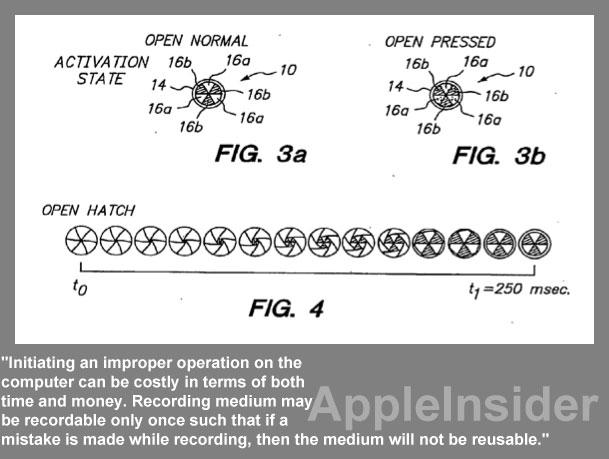Recent Steve Jobs patent filing for dynamic icons shows inventive spirit
The application for "Three State Icon for Operations" was published by the U.S. Patent and Trademark Office less than a year ago, and Apple co-founder Steve Jobs is listed as one of the concept's two inventors. It stands as Jobs' most recent patent filing, and one of more than 300 inventions he leaves behind.
The proposed invention describes a dynamic context-sensitive software icon or button that would be presented to users in different fashions. By doing this, an application could help prevent a user from accidentally initiating a task on their computer.
The filing notes that users sometimes engage in activities on their computer that cannot be stopped once they are started, like formatting a disk. In another example, if a system starts burning data to a DVD-ROM or CD-ROM, the operation cannot be stopped without ruining the disc, as the data cannot be rewritten.
"Initiating an improper operation on the computer can be costly in terms of both time and money," the document reads. "Recording medium may be recordable only once such that if a mistake is made while recording, then the medium will not be reusable."
Computer applications will avoid this issue by presenting a dialog box to users, asking them to confirm that they wish to proceed. But Apple's filing and the application credited to Jobs note that this is an additional step for the user that they believe is unnecessary.
Jobs's solution, as presented in the solution, is for a dynamic icon that would present itself in three states. By default, the icon would be displayed in a "protective state," but then could be selected to activated to change it to a second state.
The initial selection of the icon will not perform any action, but will instead simply change the icon to the second state. This method gives a pause, and allows the user to verify that they want to initiate the activity, and would help to prevent accidentally starting an operation.
"When the operation is proceeding on the computer, the icon will revert to a third state to show that the function is proceeding as desired," the filing reads.
Apple represents the concept in its filing with an icon designed like a camera aperture or iris. In its initial, "safety" state, the iris is closed.
Pressing the button with a mouse click or finger tap would then open the iris to display a new icon similar to a radioactive symbol. With the aperture opened, users could then select the icon in its second state to begin the operation.
The icon could then spin to indicate that the operation was underway. If the task is burning a DVD, the button could show a DVD logo when the operation has been completed.
The proposed invention was filed with the USPTO by Apple in July of 2010, and the document was made public that November. Jobs shares credit for the invention with Timothy Wasko.
 Neil Hughes
Neil Hughes












 Mike Wuerthele
Mike Wuerthele
 Malcolm Owen
Malcolm Owen
 Chip Loder
Chip Loder

 William Gallagher
William Gallagher
 Christine McKee
Christine McKee
 Michael Stroup
Michael Stroup
 William Gallagher and Mike Wuerthele
William Gallagher and Mike Wuerthele






